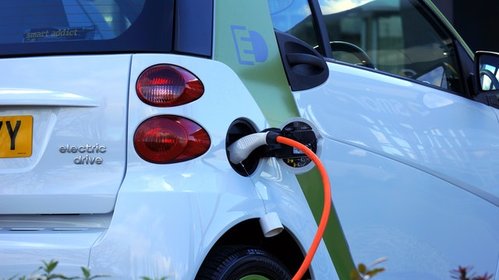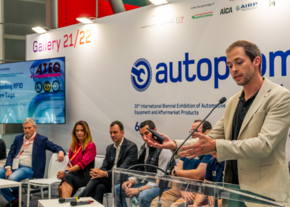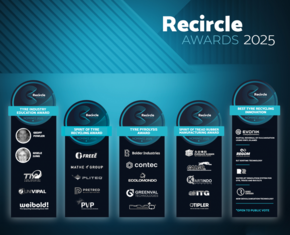
30/07/2018
Electric Cars, success follows correct battery disposal and recycling
Dino Collazzo
The average performance of electric motors is growing significantly thanks also to ultra-fast chargers and long-lasting batteries. However, "sustainability" depends largely on the effective reuse of battery metals. Here is an assessment of the situation.
From booming combustions to buzzing electric motors. Sales volumes are still quite limited, but there is no doubt that consumers are increasingly attracted to electric cars. A trend that has led traditional manufacturers and the aftermarket chain, compelled by a strong competition from new players such as hi-tech multinationals, startups and cloud services companies, to invest in innovative solutions for EV batteries. New technological applications and components whose purpose is to improve the performance of EVs, reducing recharging times, increasing mileage and, above all, looking for ways to effectively recycle used batteries. This, perhaps, is one of the great challenges that could decree the success of electric mobility.
According to many analysts, over the next few years, major changes will re-shape even the transport sector. Buses, trucks and of course cars will be powered mainly by electricity. Currently, according to the latest edition of the Global Electric vehicles outlook by the International Energy Agency, electric cars and plug-ins have exceeded 3 million units worldwide, an increase of 54% compared to 2016. Although these figures might be viewed as not really impressive, especially if compared to traditional heat engines, they should be interpreted as the sign of a transformation taking place. Experts forecast a large-scale diffusion of electric vehicles starting from 2025, when government incentives will boost sales and the number of EVs around the world should reach 125 million, or 220 million if new incentives are implemented. These are obviously estimates based on optimistic forecasts that take into account further technological developments in the field of electric mobility: first and foremost on batteries. In fact, solutions to improve battery performance are multiplying and several research centres and university labs are busy coming up with their own ideas. The target is to increase vehicle mileage, reduce re-charging times, limiting the use of rare metals and, above all, create recyclable batteries.
Recycling, therefore, is the way to go. But for this to effectively take place, the industry is called upon to re-think the recycling chain, especially as far as the elements present in the batteries: aluminium, copper, cobalt, nickel, manganese and lithium. This, for the automotive industry, represents the opportunity to create an e-mobility circular economy, in which vehicle and component manufacturers will not only build electric motors but also manage the disposal and recycling process of the batteries, thus developing a new business. At present, however, the idea of placing "regenerated" batteries back on the market is still not feasible. In fact, to date there are no facilities capable of recycling accumulators giving them a second life. Elements such as nickel and cobalt, due to their chemical-physical characteristics require rather complex, and costly, recycling systems and methods. Early days for research in this field and solutions proposed so far have very little economic value: high costs and limited possibilities of setting up an industrial process. In order to overcome these obstacles, several research centres are trying to produce batteries with a lower environmental impact. The result of recent efforts are "all-solid-state battery cells", which are safer - vitreous electrolytes have replaced liquids ones responsible for creating debris inside the circuits, the cause of a high levels of overheating - and able to have faster re-charging cycles thanks to the use of alkali-metal anodes. Given the same performance, these new batteries have the advantage of avoiding the use of cobalt derivatives, improving sustainability and facilitating their final disposal. Not only. In the last period, additional efforts have been made in improving materials already present in sodium ion and magnesium ion batteries and developing composite materials capable of increasing the performance and sustainability of lithium ion batteries.
Flow batteries are also coming under the spotlight. These use dissolved electrolytes which are pumped into an electrochemical cell through a membrane, where their chemical energy is transformed into electricity. The down side of this technology is the excessive size of these batteries, but researchers from Purdue University, in the US, have found a way to reduce their size: eliminating the membranes and replacing them with immiscible polar fluids made of salt water and methanol or ethanol. The result is a battery that recharges without having to be connected to a power outlet: simply replace the fluid that contains the exhausted electrolytes with a new one. The exhausted liquid, however, does not end its cycle once the electric charge has been consumed. On the contrary, the fluid can be regenerated inside specific centres - also using solar energy - and then reused. A decidedly "green" choice. In the idea of the researchers who worked on the project, an electric car can simply go to a classic service station but instead of filling up with petrol or diesel it would just replace exhausted fluid with “regenerated” electrolytes.
According to many analysts, over the next few years, major changes will re-shape even the transport sector. Buses, trucks and of course cars will be powered mainly by electricity. Currently, according to the latest edition of the Global Electric vehicles outlook by the International Energy Agency, electric cars and plug-ins have exceeded 3 million units worldwide, an increase of 54% compared to 2016. Although these figures might be viewed as not really impressive, especially if compared to traditional heat engines, they should be interpreted as the sign of a transformation taking place. Experts forecast a large-scale diffusion of electric vehicles starting from 2025, when government incentives will boost sales and the number of EVs around the world should reach 125 million, or 220 million if new incentives are implemented. These are obviously estimates based on optimistic forecasts that take into account further technological developments in the field of electric mobility: first and foremost on batteries. In fact, solutions to improve battery performance are multiplying and several research centres and university labs are busy coming up with their own ideas. The target is to increase vehicle mileage, reduce re-charging times, limiting the use of rare metals and, above all, create recyclable batteries.
Recycling, therefore, is the way to go. But for this to effectively take place, the industry is called upon to re-think the recycling chain, especially as far as the elements present in the batteries: aluminium, copper, cobalt, nickel, manganese and lithium. This, for the automotive industry, represents the opportunity to create an e-mobility circular economy, in which vehicle and component manufacturers will not only build electric motors but also manage the disposal and recycling process of the batteries, thus developing a new business. At present, however, the idea of placing "regenerated" batteries back on the market is still not feasible. In fact, to date there are no facilities capable of recycling accumulators giving them a second life. Elements such as nickel and cobalt, due to their chemical-physical characteristics require rather complex, and costly, recycling systems and methods. Early days for research in this field and solutions proposed so far have very little economic value: high costs and limited possibilities of setting up an industrial process. In order to overcome these obstacles, several research centres are trying to produce batteries with a lower environmental impact. The result of recent efforts are "all-solid-state battery cells", which are safer - vitreous electrolytes have replaced liquids ones responsible for creating debris inside the circuits, the cause of a high levels of overheating - and able to have faster re-charging cycles thanks to the use of alkali-metal anodes. Given the same performance, these new batteries have the advantage of avoiding the use of cobalt derivatives, improving sustainability and facilitating their final disposal. Not only. In the last period, additional efforts have been made in improving materials already present in sodium ion and magnesium ion batteries and developing composite materials capable of increasing the performance and sustainability of lithium ion batteries.
Flow batteries are also coming under the spotlight. These use dissolved electrolytes which are pumped into an electrochemical cell through a membrane, where their chemical energy is transformed into electricity. The down side of this technology is the excessive size of these batteries, but researchers from Purdue University, in the US, have found a way to reduce their size: eliminating the membranes and replacing them with immiscible polar fluids made of salt water and methanol or ethanol. The result is a battery that recharges without having to be connected to a power outlet: simply replace the fluid that contains the exhausted electrolytes with a new one. The exhausted liquid, however, does not end its cycle once the electric charge has been consumed. On the contrary, the fluid can be regenerated inside specific centres - also using solar energy - and then reused. A decidedly "green" choice. In the idea of the researchers who worked on the project, an electric car can simply go to a classic service station but instead of filling up with petrol or diesel it would just replace exhausted fluid with “regenerated” electrolytes.








